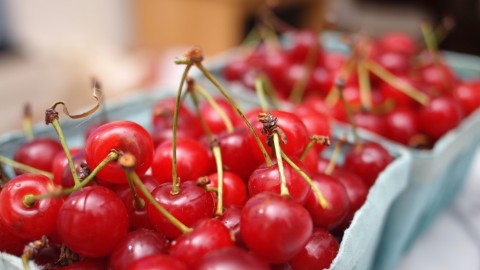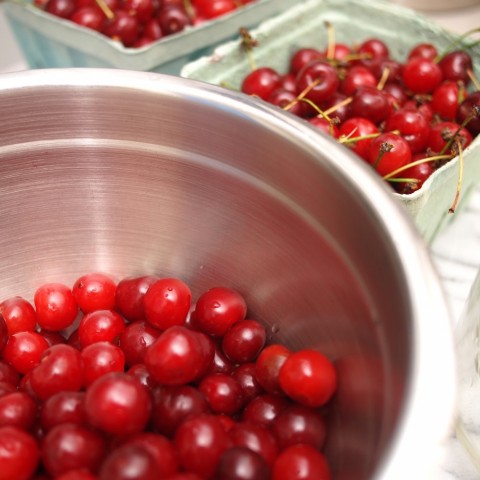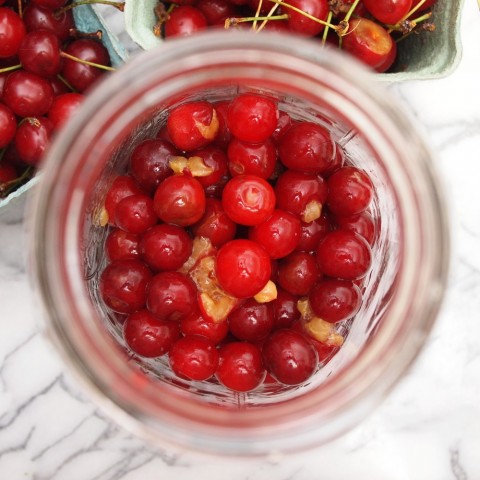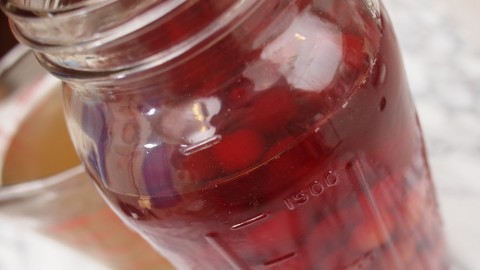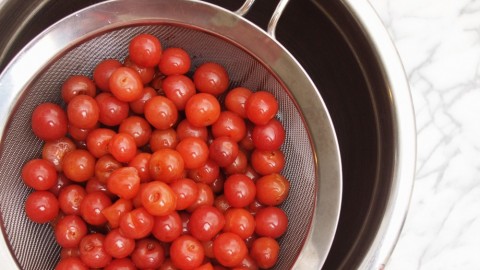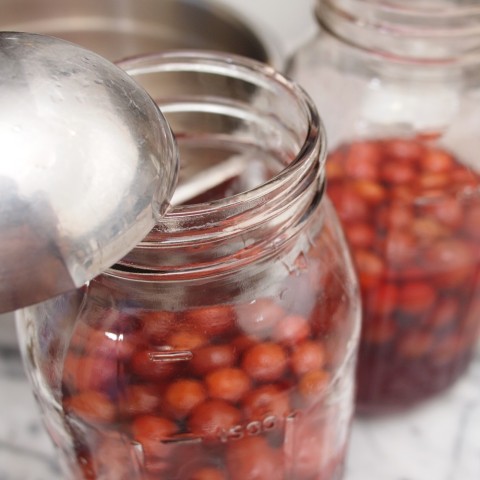Tiny chocolate cups are for chumps.
All the best tourist guidebooks seem to agree that they’re entirely traditional and absolutely vital when it comes to imbibing ginjinha — that delicious Portuguese sour cherry liqueur — in Lisbon, or Porto, or anywhere else on its Iberian home terrain. But while I have nothing but respect for good old Rick Steves and his globetrotting colleagues who write these things, on this one small point, I must disagree.
In my experience, the impulse to dispense ginjinha in a chocolate shell is an elaboration primarily aimed at the folks who come to Portugal with guidebooks in hand. And in my experience, if one wishes to enjoy ginjinha the traditional way, it is best to do this instead:
At about three o’clock on a weekday afternoon, sojourn to Largo São Domingos and search out a tiny open storefront that is just labeled ‘Ginjinha’, carved into the side of a building across the street from the Teatro Nacional D. Maria II. There, you will hand the man behind the bar one Euro, and what you’ll gain in return is a small plastic cup filled with a crystalline red liquid and a couple of shabby-looking gray cherries at the bottom.
If you receive no gray cherries, ask for them. They are vital to the real ginjinha experience.
With plastic cup in hand, you will then remove yourself directly outside of the storefront, where you will mill about or lean against the wall with one to two dozen folks from all walks of Lisbon life, including people wearing suits, tourists of discerning taste, and recent immigrants who live in the area. You’ll sip your ruby liquid until you’re down to just the shabby cherries. And then you’ll eat the cherries, too.
If you wish to act like a real local, you’ll spit their pits on the sidewalk, to be trampled by subsequent groups of drinkers and loiterers. Or if you wish to be a polite visitor — as I was when I was in Lisbon — you will spit the cherry pits back into your plastic cup, and then discreetly deposit all the leavings in one of the nearby waste bins.
In either case, what you’ll find is an experience that is categorically different from that of the bars, not two blocks away, that serve fancified versions of the sour cherry liqueur out of real bottles (rather than glass crocks) to a mostly sit-down crowd. That ginjinha, chocolate cup and all, is ultimately just fine if you like that sort of thing. But beyond all the brilliant flavor (and even more brilliant color), what I think is so interesting about ginjinha is that it seems to be a democratic tradition.
It seems to me, from my outsider’s vantage, that for one moment of the day, milling about outside with plastic cups and gray cherries, every drinking denizen of the city of Lisbon shares something. And in that sharing, for that one moment, every drinking denizen of the city is the same.
I just think that’s so cool. But then, I’m a folklorist, so I would.
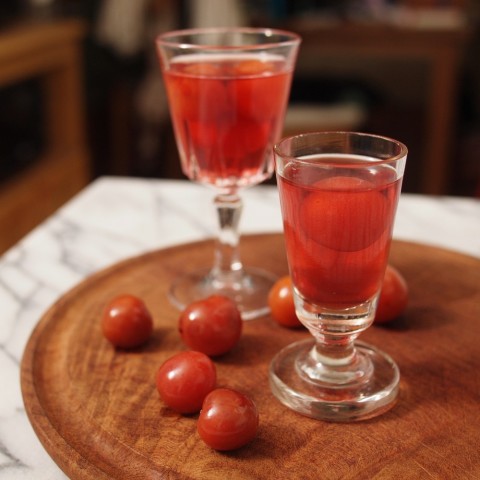
1 liter Sour Cherries, stemmed and cleaned, but not pitted
1 liter 100-Proof Vodka (or other clear, neutral spirit. Grappa may be more appropriate.)
1 liter Simple Syrup (3 cups Filtered Water, and 2 cups Sugar)
1/2 cup Red Wine
1 Cinnamon Stick
3 Cloves
To a clean half-gallon jar, add the cherries, vodka, cinnamon stick, and cloves. Cover, shake well, and then store in an out-of-the-way place for about a month, shaking periodically to make sure that all the hooch gets into contact with all the cherries.
When the vodka has turned red, and the cherries have more or less lost their color, make your simple syrup: stirring, bring the sugar and water to a simmer on the stove, then turn off the heat, cover, and allow it to cool completely in the refrigerator. Strain the vodka into a medium mixing bowl, and set the spent cherries aside for later use.
To the vodka, add the liter of simple syrup and the half cup of red wine, and mix well. Clean two half gallon glass jars (or one gallon-sized jar). Split the spent cherries between them, and pour the liquid on top.
Close the jars and allow the ginjinha to age for one to three months before drinking. You may, if you really wish, sip the finished product out of tiny chocolate cups.
